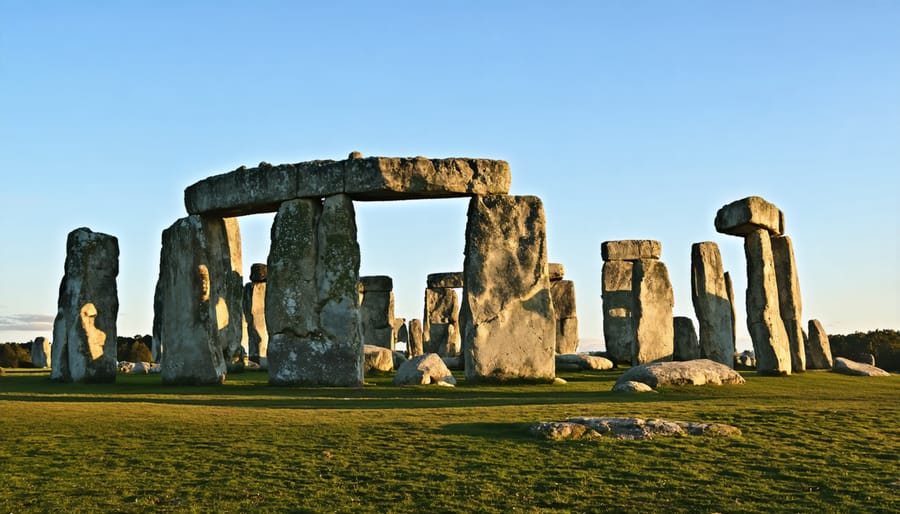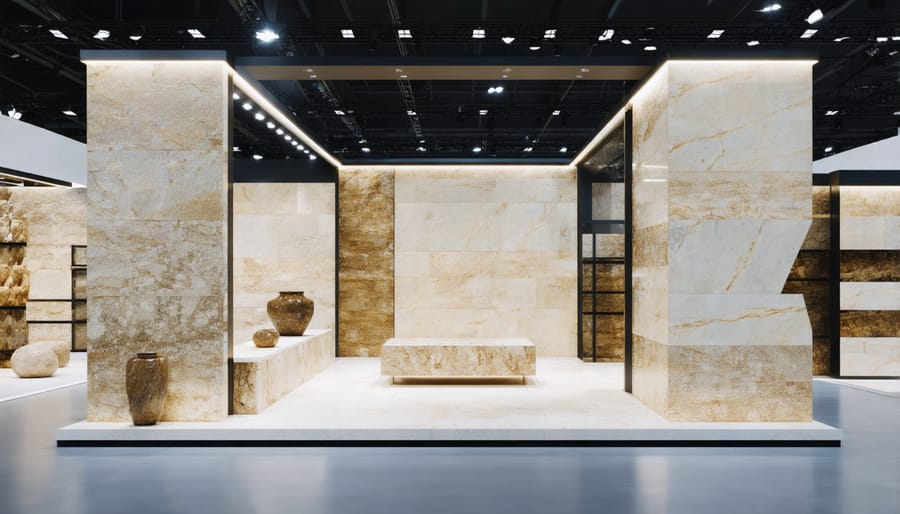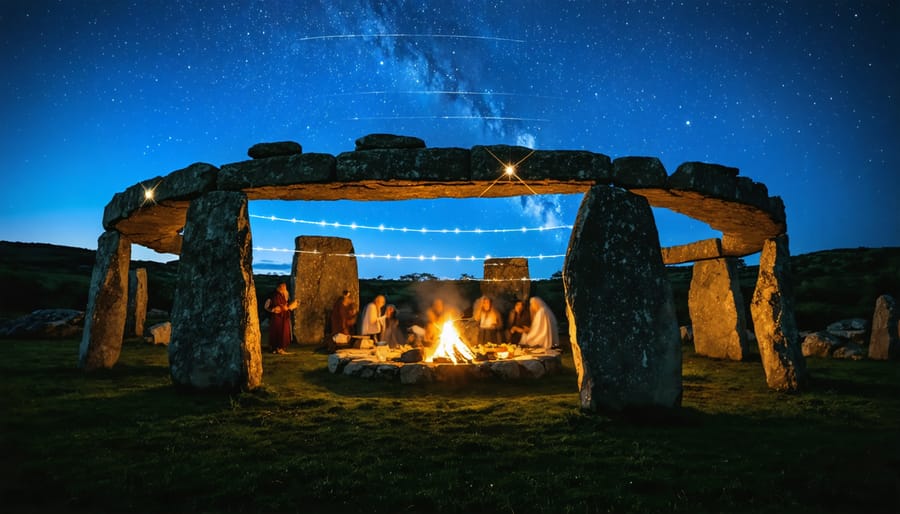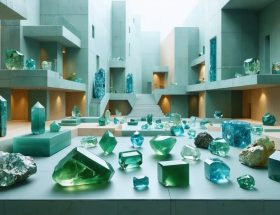Throughout human history, festivals have served as vibrant threads weaving together the fabric of civilization, marking humanity’s profound connection to nature, spirituality, and community. From ancient stone circles that celebrated celestial alignments to modern cultural gatherings, these celebrations have evolved while maintaining their essential role in human society. Archaeological evidence reveals that our ancestors gathered at sacred stone sites as early as 10,000 BCE, creating elaborate rituals that honored seasonal changes, bountiful harvests, and cosmic events. These early festivals laid the foundation for today’s diverse celebrations, demonstrating how deeply rooted these communal gatherings are in our cultural DNA.
The transformation of festivals through time reflects humanity’s journey from primitive stone-marked observances to sophisticated cultural expressions, yet their fundamental purpose remains unchanged: to unite people, honor traditions, and create meaningful connections between past and present. Whether carved in ancient megalithic monuments or expressed through contemporary festivities, these celebrations continue to serve as powerful reminders of our shared human experience and our enduring need to commemorate life’s significant moments together.
The Origins of Stone Festivals
Megalithic Celebrations
Throughout history, ancient stone monuments served as focal points for some of humanity’s earliest festivals and celebrations. At sites like Stonehenge in England, archaeological evidence suggests that Neolithic people gathered during solstices and equinoxes, marking celestial events with elaborate ceremonies. These gatherings often coincided with important agricultural milestones and lunar cycles, drawing thousands from distant settlements.
The celebrations typically involved communal feasting, as evidenced by remnants of livestock bones and ceremonial vessels found near megalithic sites. Archaeologists have discovered that these festivals weren’t merely social gatherings – they served crucial religious and astronomical purposes. The precise alignment of stones with celestial events demonstrates our ancestors’ sophisticated understanding of seasonal changes and their importance to agricultural cycles.
Similar megalithic celebrations occurred at sites across Europe, from Carnac in France to Callanish in Scotland. These gatherings strengthened community bonds, facilitated trade, and marked important seasonal transitions, establishing patterns that would influence festival traditions for millennia to come.

Quarry Festivals
Throughout history, quarry workers celebrated significant stone extractions with elaborate festivities that combined religious ceremonies with communal celebrations. Ancient Egyptian records describe grand ceremonies following the successful quarrying of granite blocks for pyramids, where workers would feast and perform ritualistic dances to honor their gods.
In Roman times, the extraction of massive marble blocks was marked by sacrificial offerings to the gods, particularly Mercury, the patron of commerce and transportation. These celebrations often lasted several days, featuring athletic competitions, theatrical performances, and communal feasts.
Medieval European quarry festivals were particularly notable in regions like Carrara, Italy, where the successful extraction of premium marble was cause for village-wide celebrations. These events typically included religious processions, craft demonstrations, and traditional games that tested workers’ strength and skill.
The tradition continues today in various forms. Modern quarry festivals, while less religious in nature, still celebrate significant extractions and technological achievements. Many historic quarrying regions maintain annual festivals that honor their stone-working heritage, combining historical reenactments with contemporary celebrations of craftsmanship.
Traditional Stone Festivals Around the World
European Stone Traditions
Europe’s rich stone heritage is beautifully celebrated through various traditional festivals, with Italy and Scotland hosting some of the most remarkable celebrations. The Carrara marble traditions in Tuscany date back to Roman times, with the annual Marble Week festival drawing thousands of visitors to witness sculptors transform raw blocks into masterpieces. This week-long celebration includes live carving demonstrations, workshops, and exhibitions that showcase the region’s centuries-old connection to this precious stone.
In Scotland, the Aberdeen Granite Festival pays homage to the material that earned the city its “Silver City” nickname. The celebration, initiated in the 19th century, features traditional stone-cutting demonstrations, architectural tours of historic granite buildings, and competitions among modern craftsmen. Local stonemasons display their skills using traditional tools and techniques, keeping alive the heritage of granite working that shaped Aberdeen’s identity.
These festivals not only preserve ancient craftsmanship but also foster innovation in stone artistry. They serve as vital platforms for knowledge transfer between generations, ensuring that traditional stone-working methods continue alongside contemporary practices. The events also play a crucial role in promoting sustainable stone use and supporting local quarrying communities, while educating the public about the historical significance of these natural resources.

Asian Stone Festivals
Throughout Asia’s rich history, stone festivals have played a vital role in celebrating the region’s most precious natural materials. In China, the Jade Culture Festival in Xiuyan County stands as one of the most significant celebrations, dating back over 2,000 years. This annual event showcases the craftsmanship and cultural importance of jade, featuring elaborate carving demonstrations, traditional markets, and exhibitions of historical jade artifacts.
The festival originated during the Han Dynasty when jade was considered more valuable than gold, symbolizing virtue, beauty, and immortality. Today, thousands gather to witness master artisans transform raw jade into intricate sculptures and jewelry, keeping ancient techniques alive while embracing modern innovations.
In India, the Marble Festival of Rajasthan celebrates the region’s world-renowned marble traditions. The event, held in Makrana, birthplace of the marble used in the Taj Mahal, brings together artisans, traders, and enthusiasts from across the subcontinent. Visitors witness spectacular displays of marble craftsmanship, from traditional temple architecture to contemporary design applications.
Both festivals serve as living museums, preserving ancient stone-working traditions while adapting to modern architectural and design needs. These celebrations not only honor the cultural significance of natural stone but also provide vital platforms for trade, education, and the exchange of artistic techniques between generations of craftspeople.
Modern Stone Festivals and Trade Shows
Contemporary Celebrations
Contemporary stone festivals have evolved into vibrant celebrations that blend traditional customs with modern interpretations. Notable events like Italy’s Marmomacc in Verona and Turkey’s Natural Stone Fair in Izmir showcase the latest innovations in stone technology alongside cultural performances and artistic demonstrations.
These modern gatherings serve multiple purposes, combining industry trade shows with public celebrations that educate and entertain. The Carrara Marble Weeks festival, for instance, transforms the historic Italian quarry town into an open-air gallery, featuring contemporary sculptures and installations created from local marble.
Many communities have revived ancient stone-working traditions through annual festivals. The Vermont Stone Arts Festival celebrates the state’s granite heritage with live demonstrations of traditional cutting and carving techniques, while incorporating modern sustainable practices and digital fabrication methods.
Interactive elements have become central to these celebrations, with hands-on workshops allowing visitors to try stone carving, mosaic making, and digital design. Educational programs often highlight the importance of stone conservation and sustainable quarrying practices, bridging the gap between historical methods and contemporary environmental concerns.
These festivals now attract diverse audiences, from industry professionals and artists to families and tourists, fostering a renewed appreciation for natural stone in modern architecture and design.
Industry Events
Modern stone industry gatherings have evolved significantly from their humble beginnings as local trade meetings to become prestigious international events. Today’s stone trade exhibitions showcase the latest innovations in quarrying, fabrication, and installation techniques while celebrating the timeless beauty of natural stone.
Notable events like the Marmomacc in Verona, Italy, which began in 1961, have become cornerstone gatherings for industry professionals worldwide. This renowned exhibition attracts over 68,000 visitors annually, featuring cutting-edge technology demonstrations and architectural innovations. Similarly, China’s Xiamen Stone Fair, established in 2001, has grown to become one of Asia’s largest stone industry events.
These exhibitions serve multiple purposes: facilitating global trade relationships, showcasing technological advancements, and preserving traditional stoneworking techniques. They provide valuable platforms for knowledge exchange between quarry operators, fabricators, architects, and designers. Educational seminars, product demonstrations, and networking opportunities have become integral components of these events, fostering innovation while honoring the rich heritage of stone craftsmanship.
The Stone Industry Awards, introduced in various regions during the 1990s, further enhance these gatherings by recognizing excellence in stone design, installation, and conservation projects.

The Future of Stone Festivals
Stone festivals are evolving to meet the demands of the 21st century while preserving their rich cultural heritage. Modern celebrations now incorporate digital elements, such as virtual reality tours of historic quarries and interactive exhibits showcasing ancient stoneworking techniques. These technological additions help engage younger generations while maintaining the festivals’ educational value.
Sustainability has become a central theme in contemporary stone festivals. Many events now highlight eco-friendly quarrying practices, recycled stone applications, and innovative conservation methods. Festival organizers are increasingly partnering with environmental organizations to demonstrate the natural stone industry’s commitment to responsible resource management.
Social media and online platforms have transformed how these celebrations reach their audience. Live streaming of stone carving demonstrations, virtual workshops, and online galleries allow people worldwide to participate in these cultural events. This digital presence has helped create year-round communities of stone enthusiasts who share knowledge and experiences beyond the festival dates.
Traditional elements remain crucial, with hands-on workshops, craft demonstrations, and cultural performances continuing to draw crowds. However, these aspects are now complemented by modern features like augmented reality displays showing historical quarrying methods and interactive design stations where visitors can experiment with different stone applications.
Looking ahead, stone festivals are likely to become hybrid events, combining physical gatherings with digital experiences to reach broader audiences while preserving their cultural significance.
Stone festivals have endured throughout human history as powerful expressions of cultural identity and communal celebration. From ancient quarry festivals to modern stone carving symposiums, these gatherings continue to honor our deep connection with natural stone. Today, these events serve multiple purposes – preserving traditional craftsmanship, fostering artistic innovation, and strengthening community bonds. As we face an increasingly digital world, stone festivals remind us of our tangible heritage and the timeless appeal of working with natural materials. They stand as living bridges between our past and present, ensuring that the art and craft of stonework remains vibrant for future generations. These celebrations not only showcase the versatility and beauty of stone but also highlight its enduring role in human civilization.










